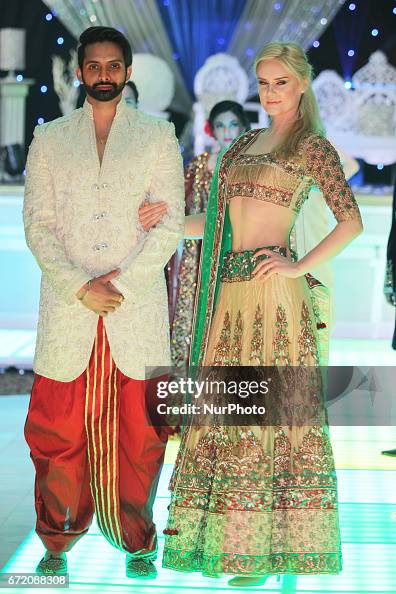Discover the very best Selection of Genuine Eastern Use
Embark on a trip via the complex globe of authentic Eastern wear, where cultural customs and sartorial beauty intertwine to produce a tapestry of unparalleled appeal. The attraction of Eastern clothing hinges on its ability to transcend time and location, providing a glimpse into the abundant heritage and workmanship of varied regions. As you discover the myriad designs and layouts, each item holds a tale waiting to be unraveled, inviting you to accept the artistry and elegance that Eastern style encapsulates. Prepare to be captivated by the appeal of Eastern wear and submerse on your own in a globe where every garment is a testimony to centuries-old practices and exquisite craftsmanship.
Background of Eastern Fashion

Today, Eastern style continues to mesmerize the worldwide market, with designers drawing motivation from typical clothing to develop modern-day analyses that appeal to a large target market. The rich tapestry of Eastern style background offers as a testament to the creativity and craftsmanship of the artisans who have actually added to its development.
Kinds Of Eastern Clothes
Exploring the diverse variety of typical garments found in Eastern cultures reveals an interesting tapestry of styles and layouts that reflect special histories and cultural identities. From the elaborate embroidery of Indian sarees to the moving silhouettes of Japanese robes, Eastern clothes incorporates a large range of styles. Whether it's the opulent fabrics of Persian clothing or the minimal beauty of Vietnamese ao dai, Eastern clothes offers an exciting peek right into the diverse cultures and traditions of the East.
Workmanship and Materials
A thorough assessment of Eastern outfit discloses the precise craftsmanship and beautiful products that underpin these traditional garments. Eastern wear is renowned for its detailed needlework, fragile handwork, and attention to information that showcase the ability and artistry of the artisans. From the vibrant sarees of India to the flowing bathrobes of the Middle East, each garment is a work of art of precision and dedication.
Workmanship in Eastern attire typically includes classic techniques gave through generations. Craftsmens spend hours, occasionally days, diligently developing elaborate patterns additional resources and styles that embellish the textile. Whether it's the zardozi service a Pakistani shalwar kameez or the kantha stitching on a Bangladeshi saree, the level of workmanship is unmatched.
In addition, the materials used in Eastern wear are very carefully selected to ensure both top quality and credibility. eastern wear pakistan. Fabrics like silk, chiffon, cotton, and velvet are frequently used, each picked for its special homes that boost the last garment. Embellishments such as beads, sequins, and mirrors add a touch of glamour and deluxe to these typical sets, making them truly stand out in the world of fashion
Popular Eastern Wear Trends
Current years have experienced a rebirth in the popularity of standard Eastern wear, with a remarkable focus on combination designs and modern adaptations. One famous pattern in Eastern wear is the unification of modern-day aspects into standard attires, producing an unique mix of cultural heritage and contemporary style. Designers are reimagining timeless shapes, such as the saree and salwar kameez, by infusing them with western cuts, cutting-edge draping strategies, and unique decorations.

Additionally, minimalist aesthetic appeals and monochromatic color schemes have actually obtained grip in Eastern wear, supplying an innovative and downplayed look. This change in the direction of simpleness mirrors a modern take on traditional styles, interesting those looking for a more classy and refined fashion statement.
Tips for Designing Eastern Outfits
Incorporating modern elements and conventional craftsmanship into Eastern use opens up a myriad of styling possibilities for style enthusiasts looking to develop unique and culturally abundant attire. When styling Eastern attires, it's vital to discover a balance in between traditional aspects and contemporary trends.
Accessories play an important function in elevating an Eastern outfit. Pay focus to shoes selections, opting for standard mojaris or juttis for a full Eastern-inspired outfit.
Last but not least, self-confidence is vital when styling look at this web-site Eastern wear. Accept the cultural heritage and craftsmanship behind each item, and wear it with pride to genuinely symbolize the significance of Eastern fashion.
Conclusion
In conclusion, Eastern style supplies a distinct blend of tradition and modernity, showcasing the abundant social heritage and craftsmanship of the East. With a diverse series of designs and products, Eastern clothing mesmerizes style lovers worldwide. By discovering the background, kinds, workmanship, and fads of Eastern wear, people can embrace the charm and narration elements of this cultural outfit in their wardrobe.
The history Visit Your URL of Eastern style traces back centuries, showing diverse social impacts and typical workmanship. Today, Eastern style continues to astound the global market, with designers drawing inspiration from conventional clothing to develop contemporary analyses that appeal to a large target market. One prominent pattern in Eastern wear is the consolidation of modern-day elements into traditional attires, producing an unique mix of social heritage and contemporary style.Integrating modern aspects and typical workmanship into Eastern use opens up a myriad of styling chances for fashion lovers looking to produce culturally abundant and special attire. eastern wear pakistan.In conclusion, Eastern style offers an one-of-a-kind blend of custom and modernity, showcasing the rich cultural heritage and craftsmanship of the East